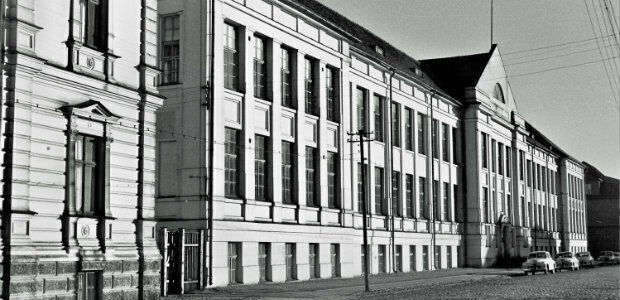
History of the University of Tartu Natural History Museum
For more than 220 years, the University of Tartu Natural History Museum has been exploring and presenting living and non-living nature from all over the world. The University's research has amassed 1.3 million specimens, of which the permanent exhibition "Earth. Life. Story", nearly 8,000 are on display.
Founded on April 6, 1802 (March 26 according to the old calendar), the museum, then called the Nature Cabinet, is the oldest in Estonia. On that day, the first natural history collection arrived - a gift from Russian Grand Duke Konstantin Pavlovich. The founder of the museum's geological, zoological and botanical collections was the first professor of natural history, Gottfried Albrecht Germann (1773-1809), who, in addition to his teaching and research work, also ran the Natural History Cabinet and the Botanical Garden. The collections, initially intended for teaching purposes only, were opened to the general public in 1804. The Cabinet was open to the public two days a week, for two hours on Wednesday and Saturday. In 1809, the museum, which had been housed in a number of rented premises, was given a permanent home in the main building of the university and the collections were moved to the second floor, next to the assembly hall. However, the herbariums were moved to the auditorium of the botanic garden's greenhouse. The rapid development of the natural sciences soon required exhibits with a narrower focus, and in 1813 the geological collections of the Natural History Cabinet were used to form the Geology and Mineralogy Museum, headed by Professor of Mineralogy O. M. L. von Engelhardt. In 1822, the zoological collections of the Cabinet were used to establish the Museum of Zoology, under the direction of J. F. Eschscholtz, Professor of Comparative Anatomy. The Museum of Botany operated from 1872 to 1947 and was housed in the teaching buildings built in the Botanical Garden.
The Museum of Geology and the Museum of Zoology were separate museums until 2005, when they were merged to form the University of Tartu Natural History Museum. In 2014, the Botanical Garden was merged with the museum to form the new University of Tartu Natural History Museum and Botanical Garden. The museum and botanical garden are closely linked to the university's institutes of natural sciences and we contribute to the university's research activities. As a result, new scientific collections such as microbiological collections and collections of DNA and environmental samples have been added to the museum collection.
By the 19th century, the University of Tartu had become one of the most important centers of natural sciences in the Russian Empire, but its growing collections suffered from a lack of space for almost a century. It was not until the 20th century that the opportunity arose to build a new and large building for natural sciences and a museum on Vanemuise Street, where the museum is still located today. Completed in 1915, it was the first purpose-built museum building in Estonia, and its spacious halls were the first to house an exhibition on the systematics of wildlife. The current permanent exhibition "Earth. Life. Story" features exhibits from all the the University of Tartu Natural History Museum's collections: geology, zoology, botany and mycology. It opened in 2016 in the renovated halls of the former the Museum of Zoology, where a balcony was also built. The University of Tartu Natural History Museum is unique in Estonia thanks to the global reach of the museum's scientific collections. The repository that the museum has preserved over the centuries is open to scientists from all over the world.
